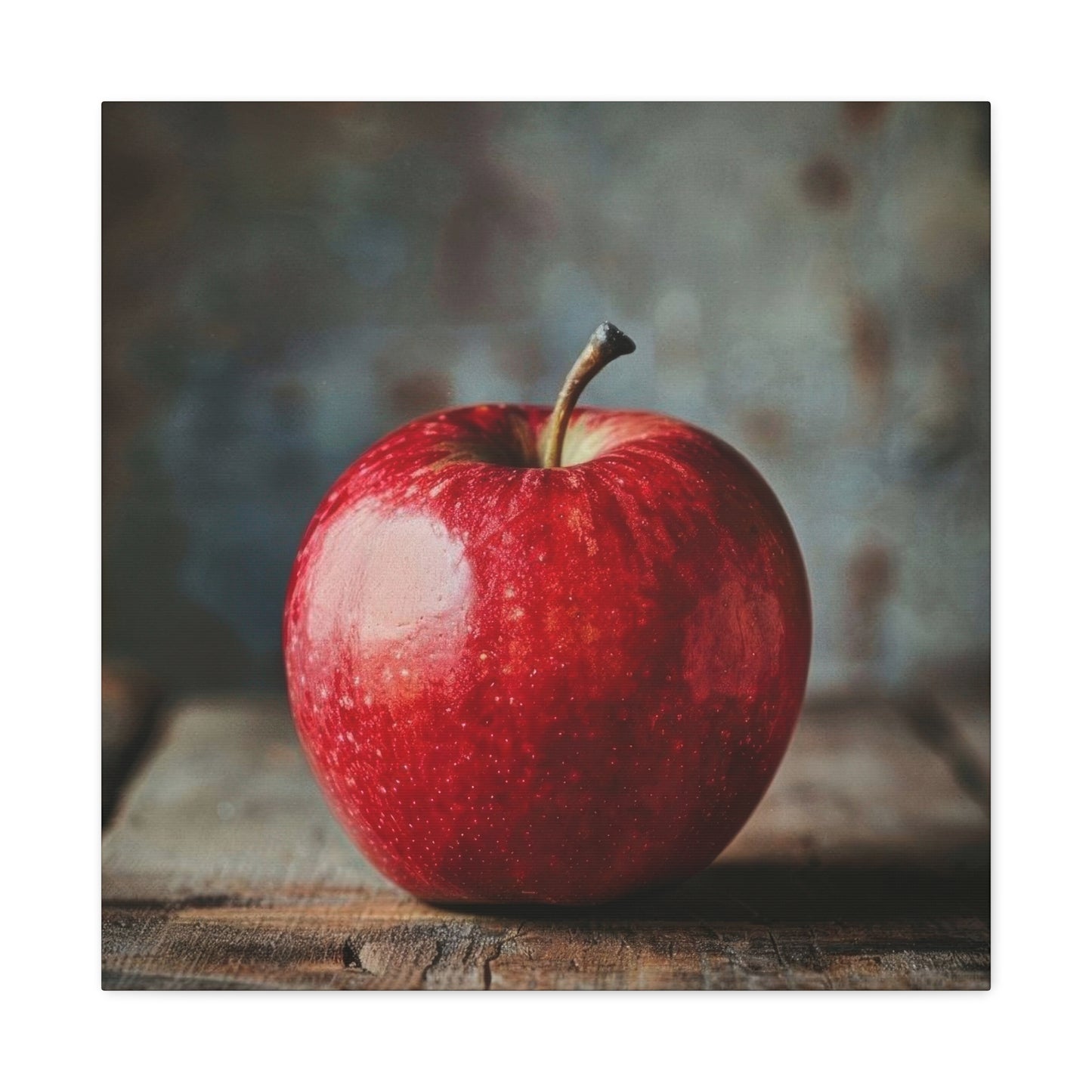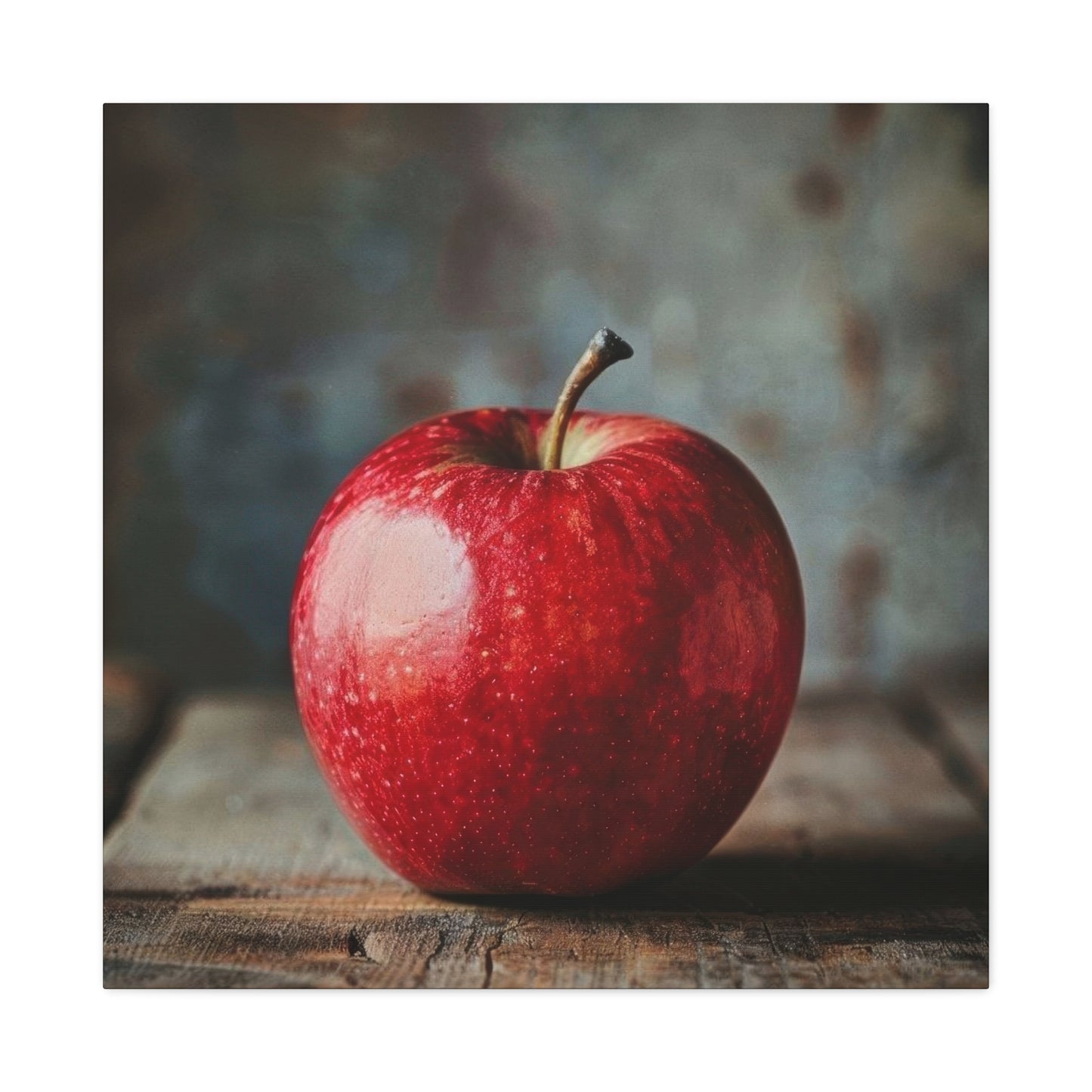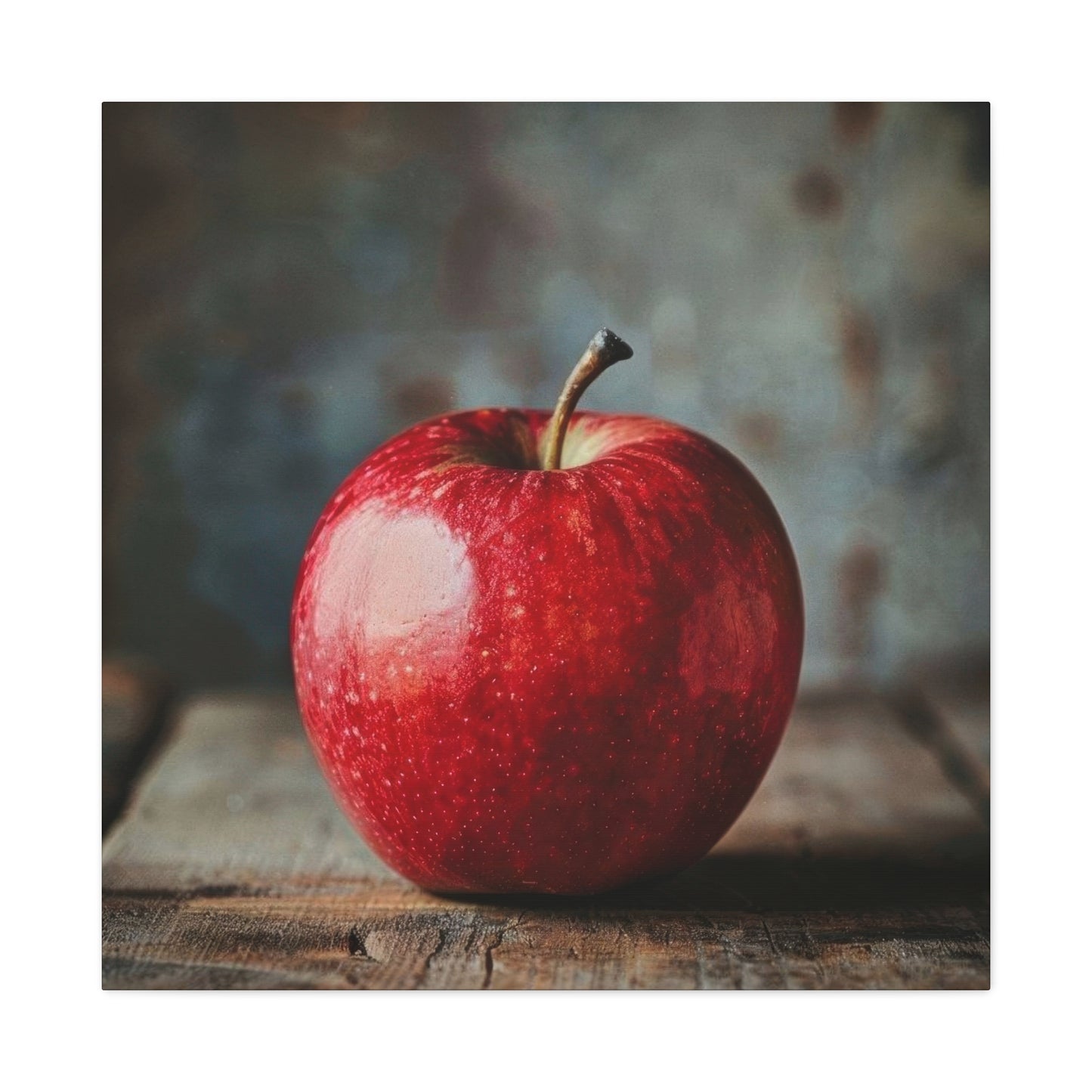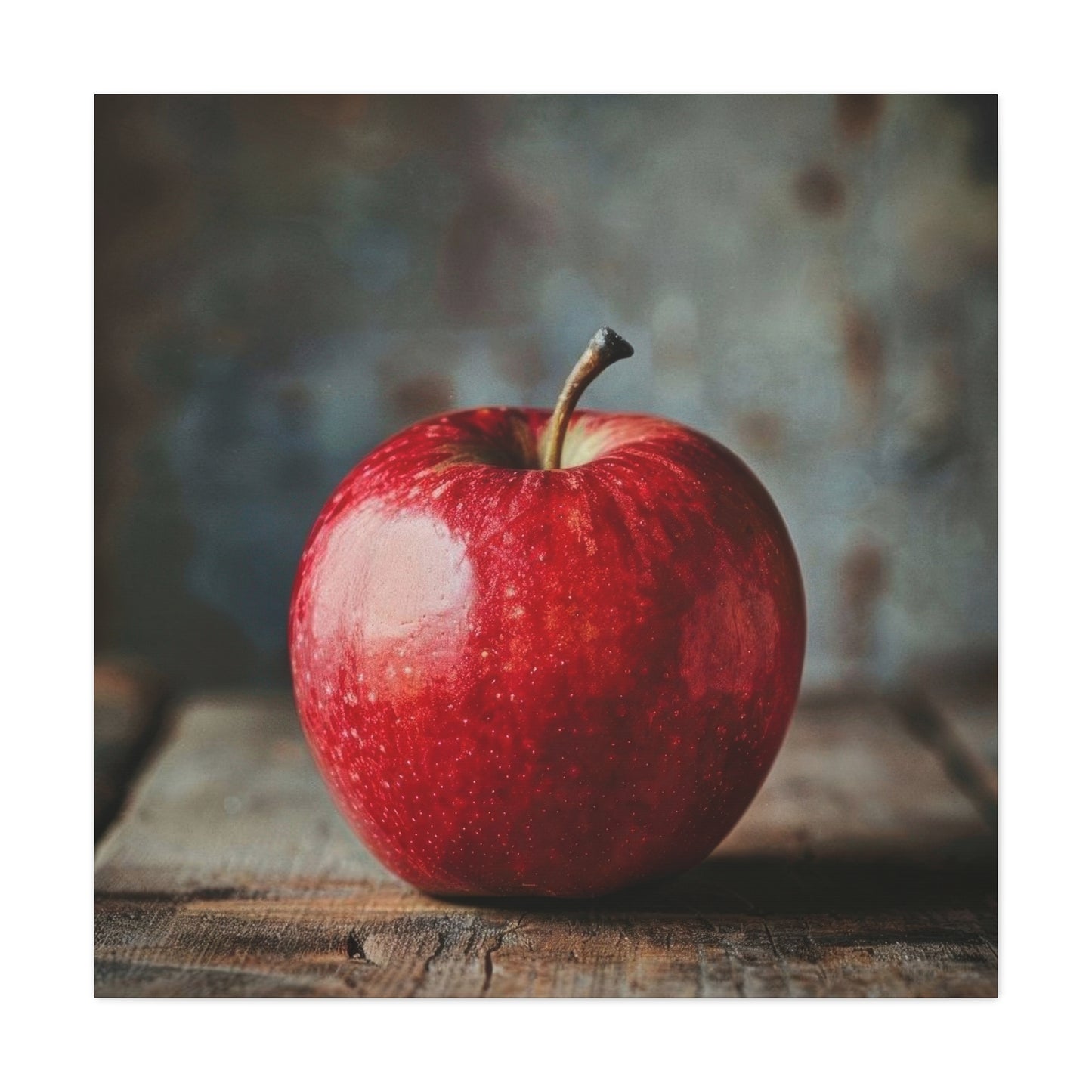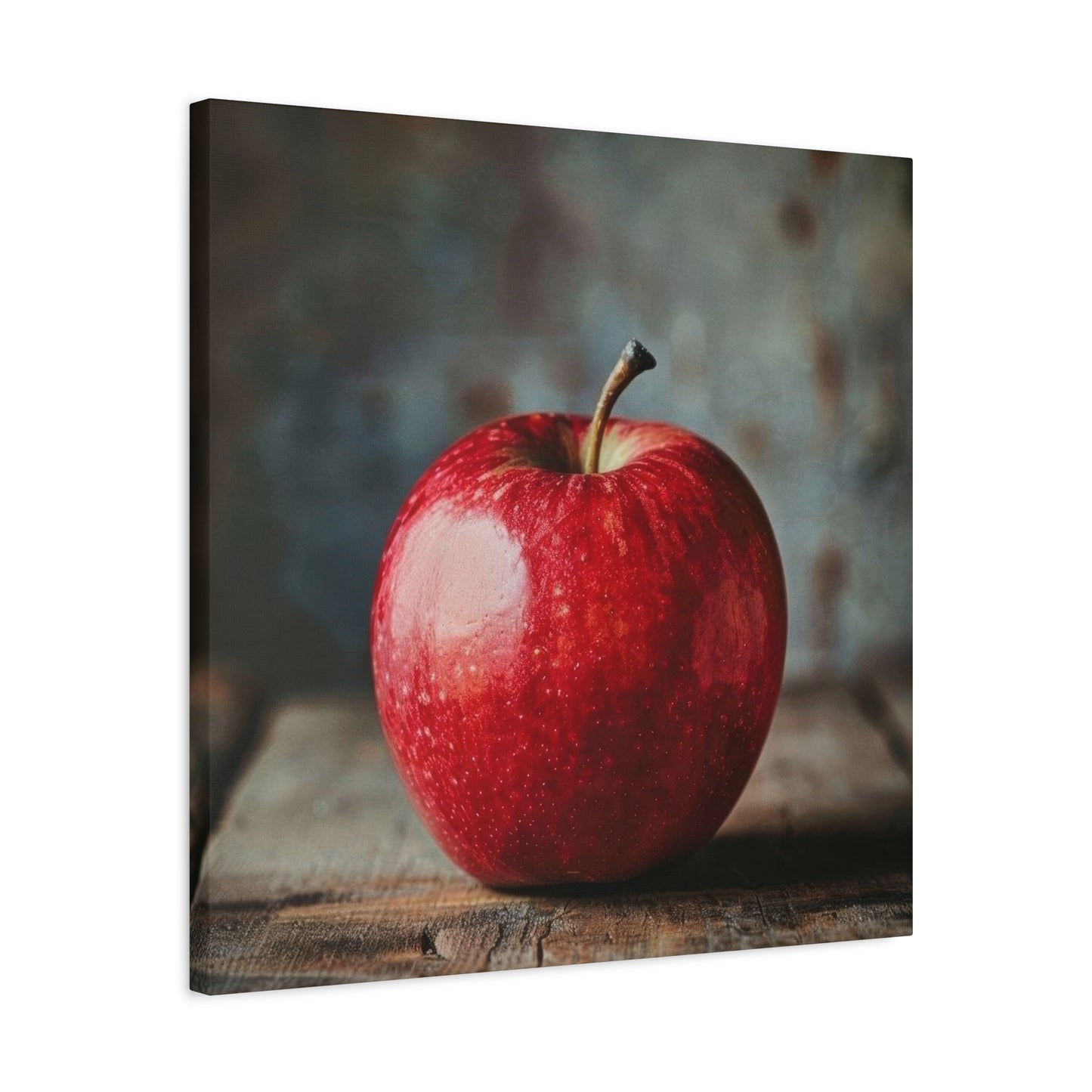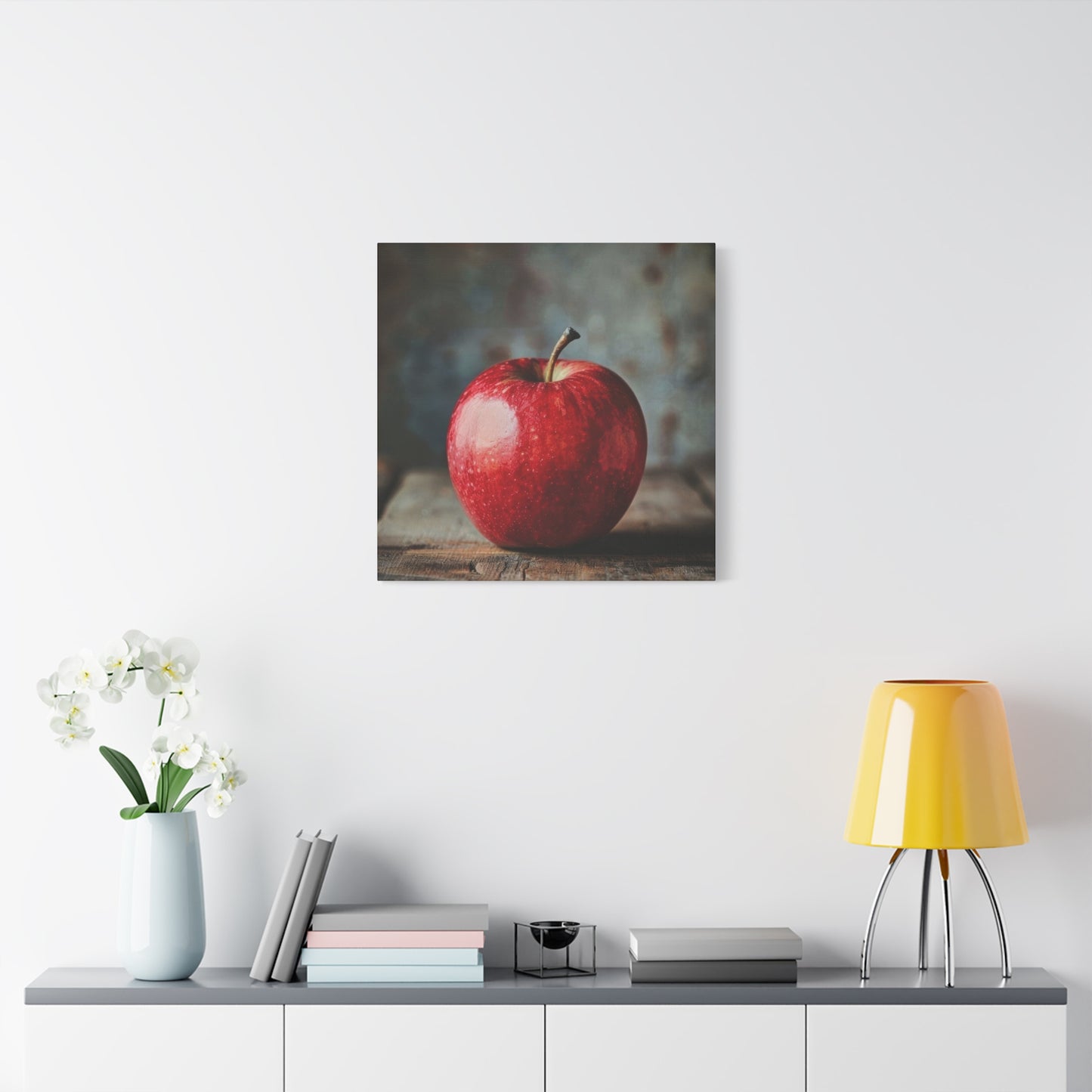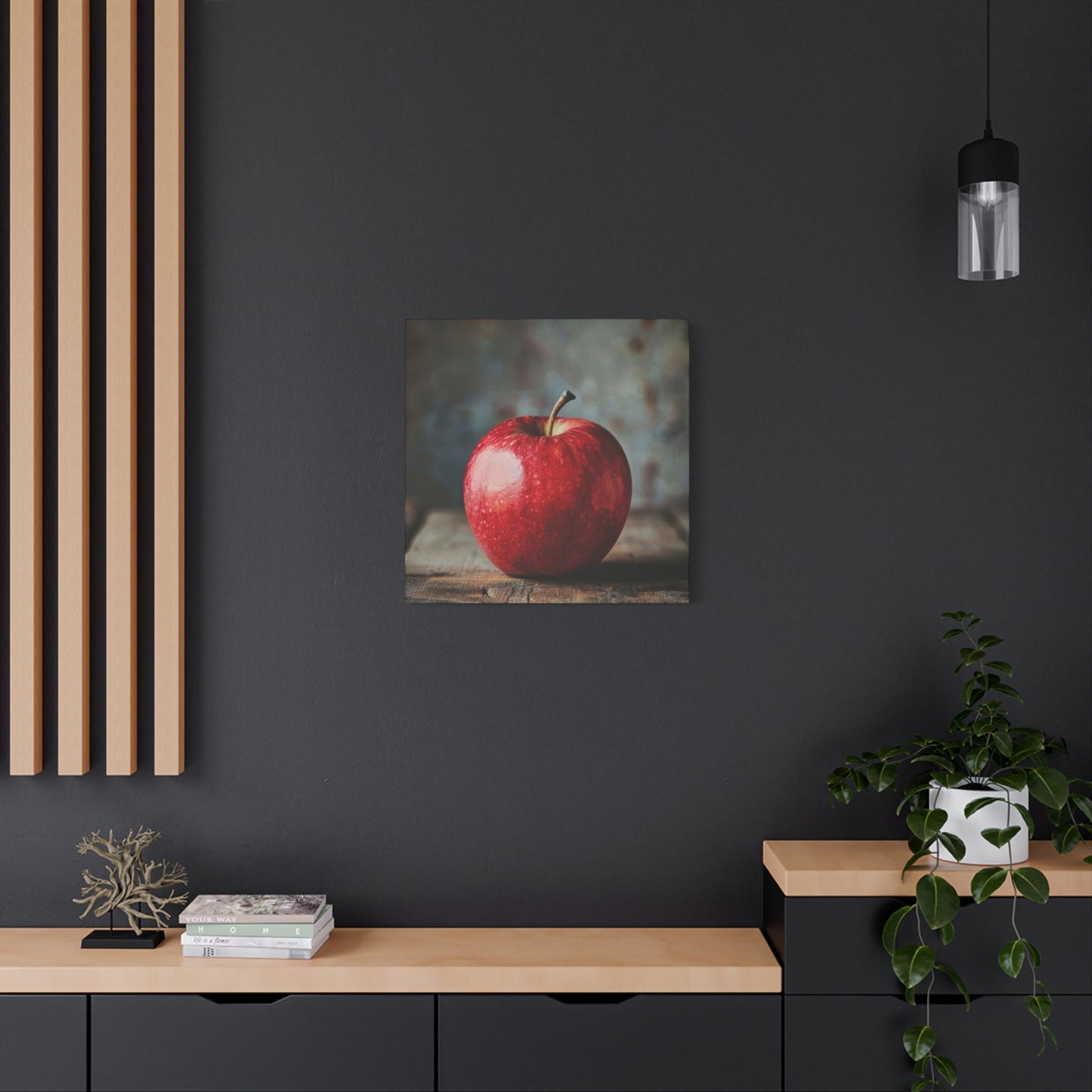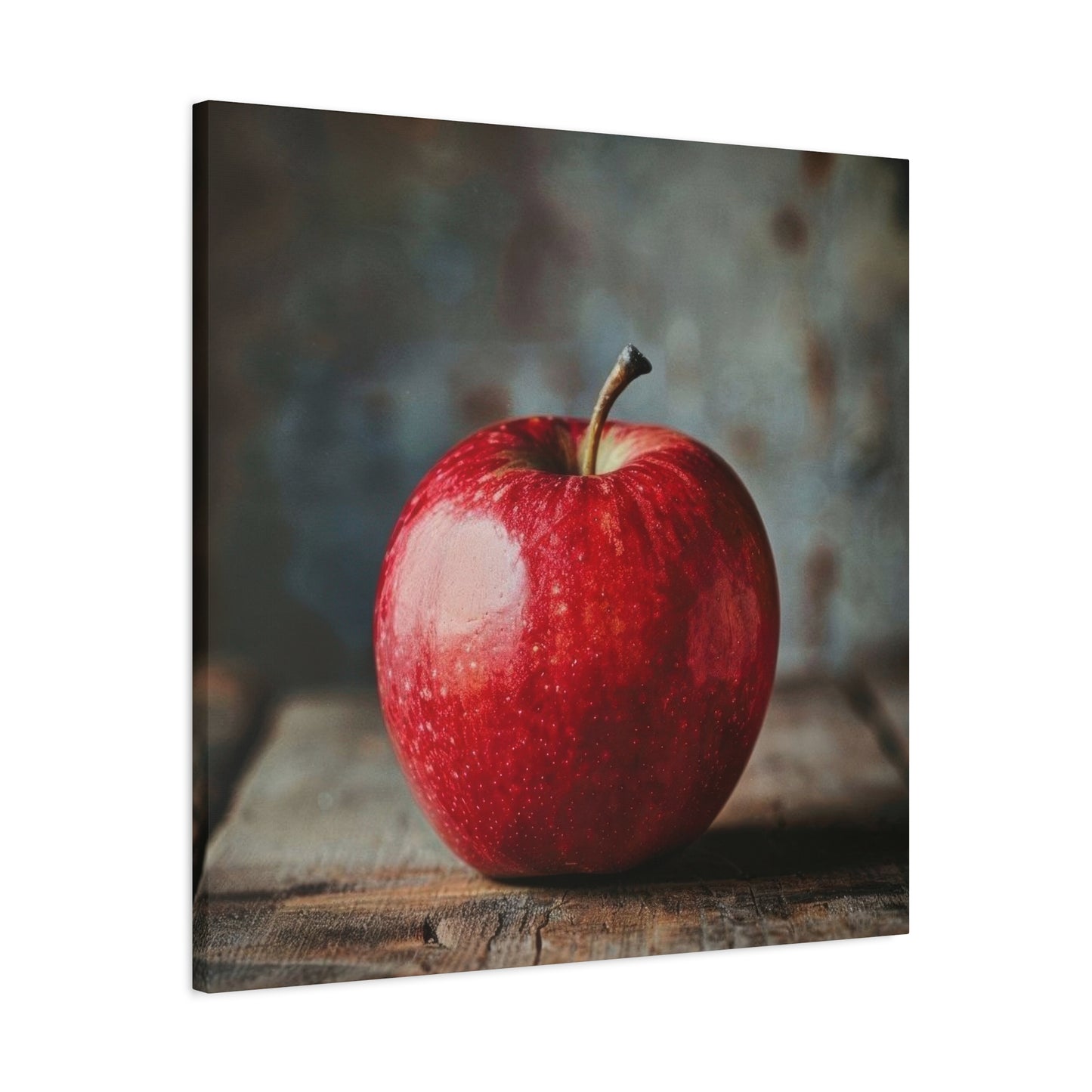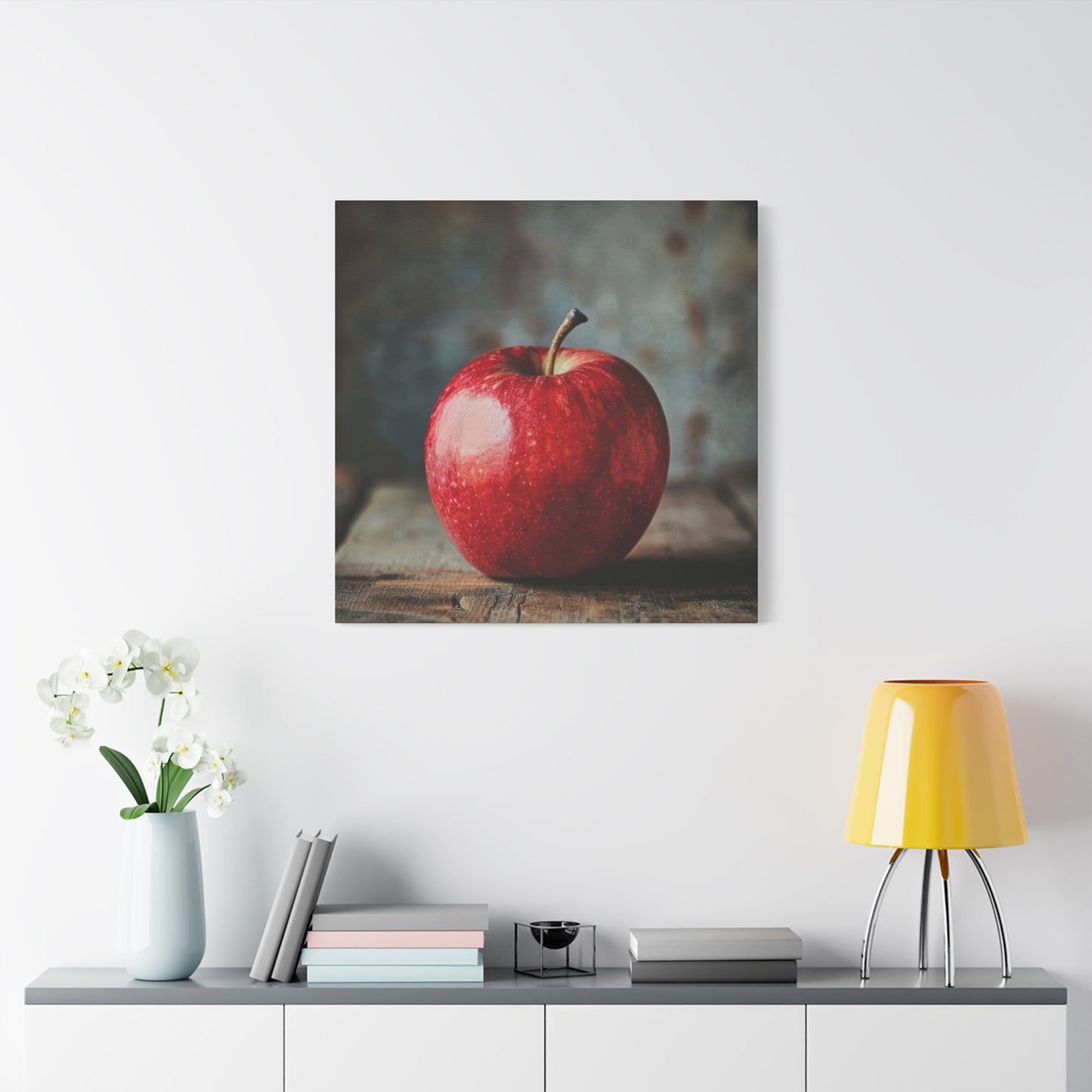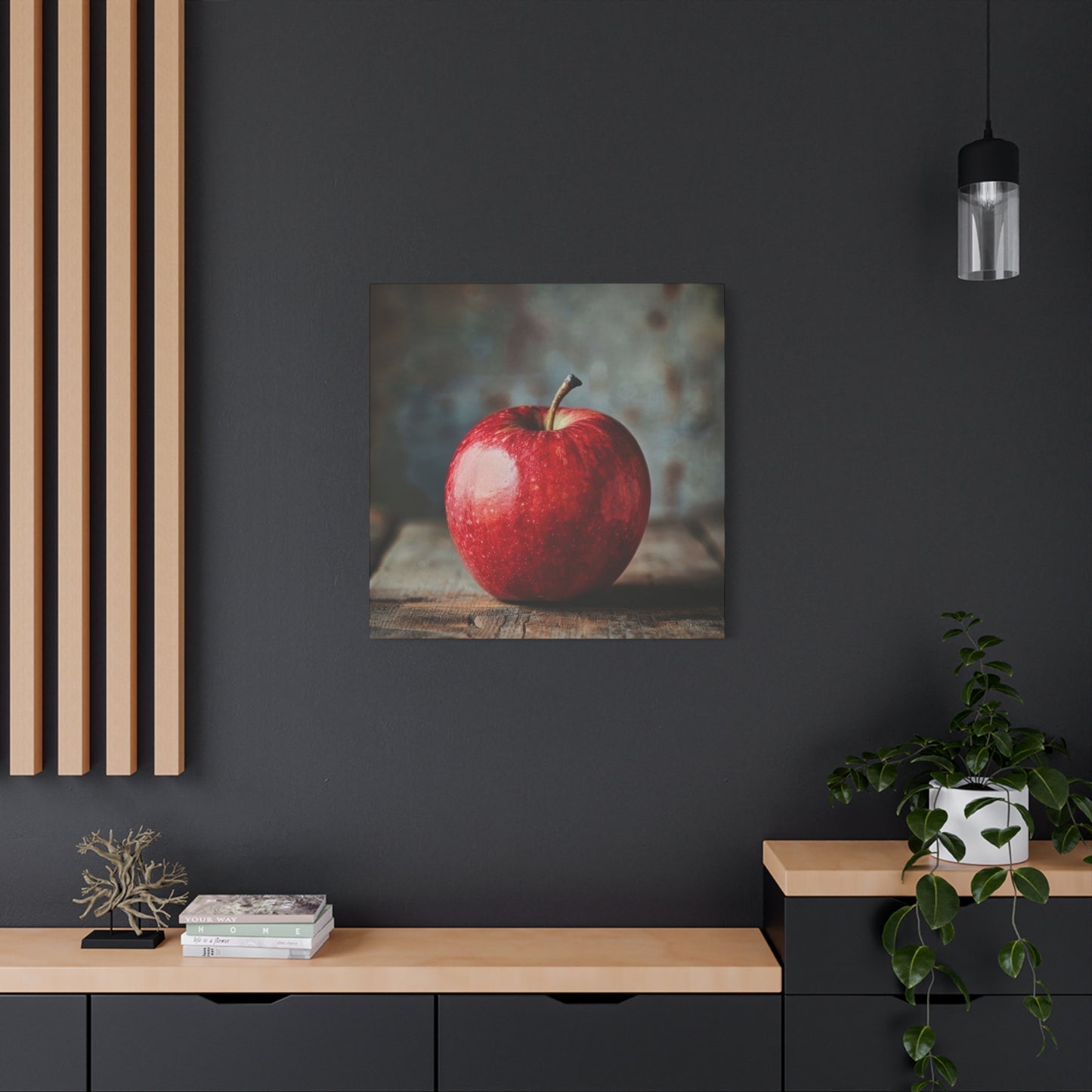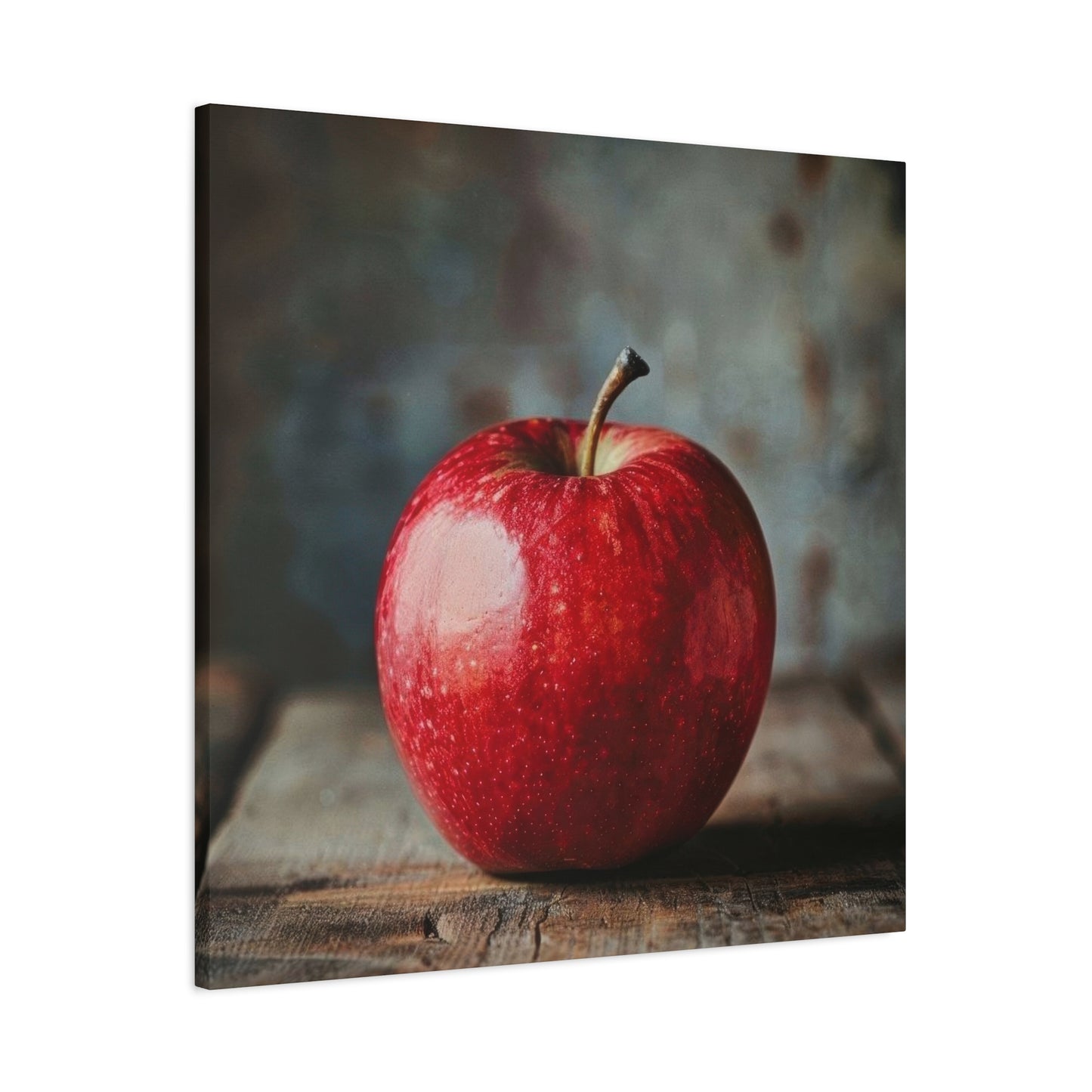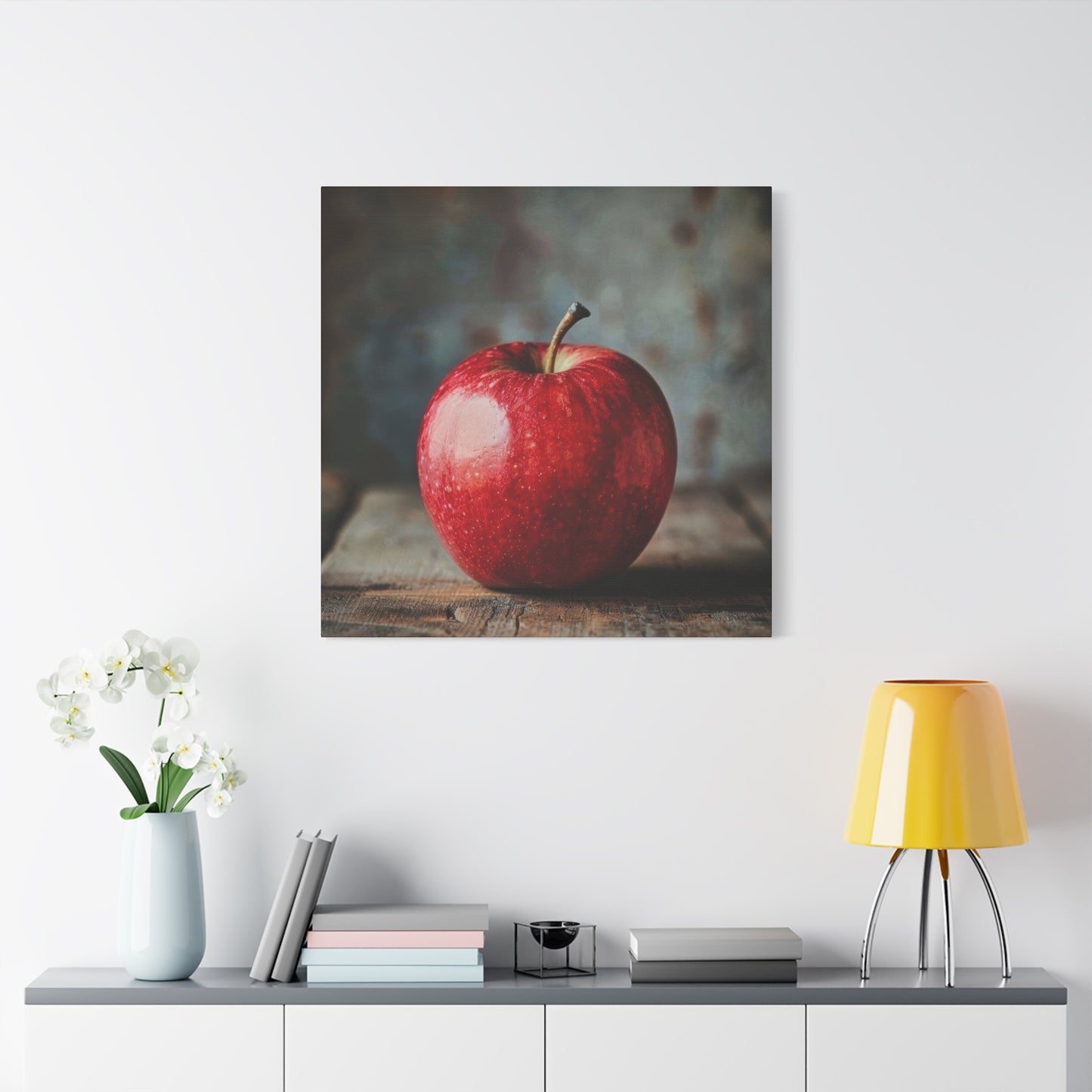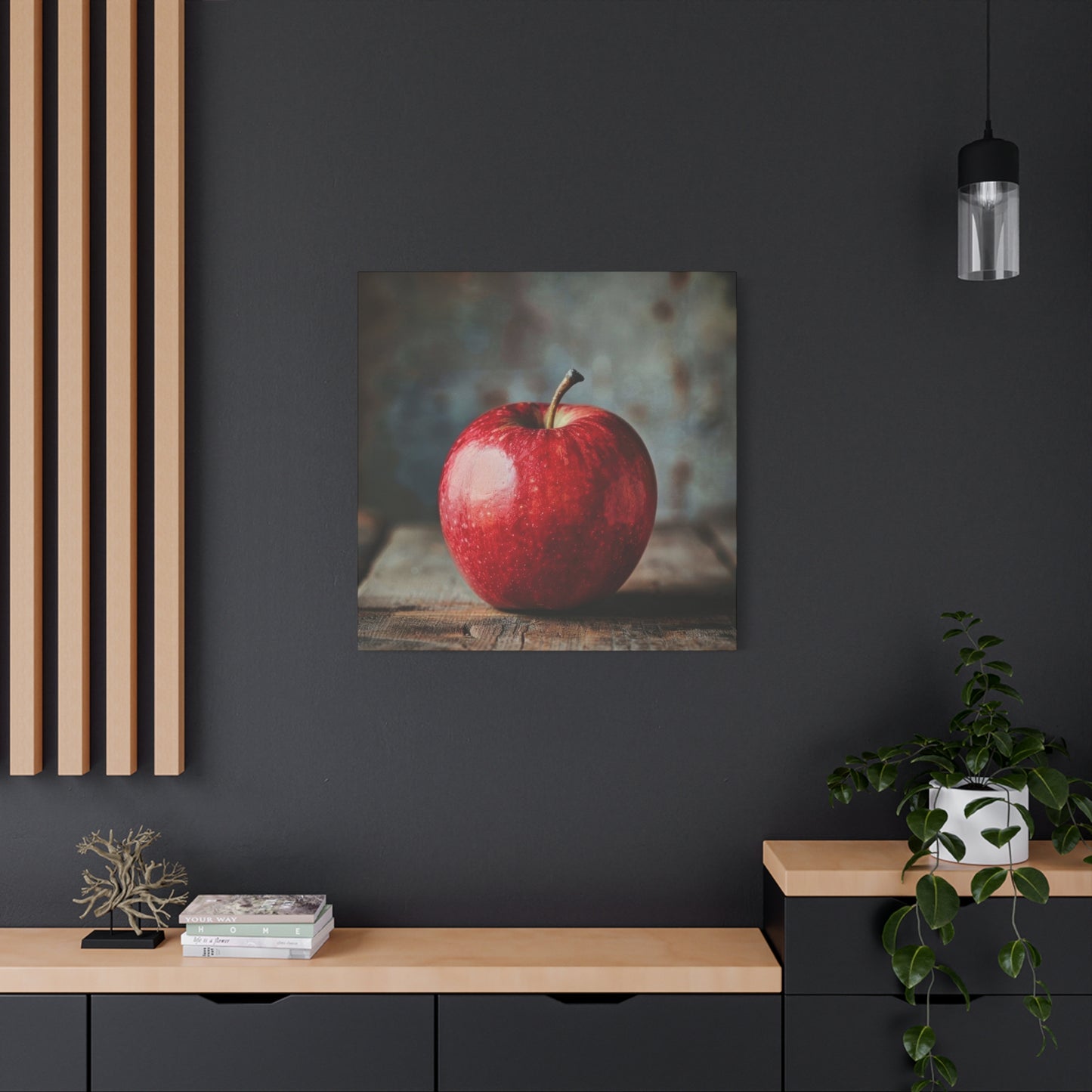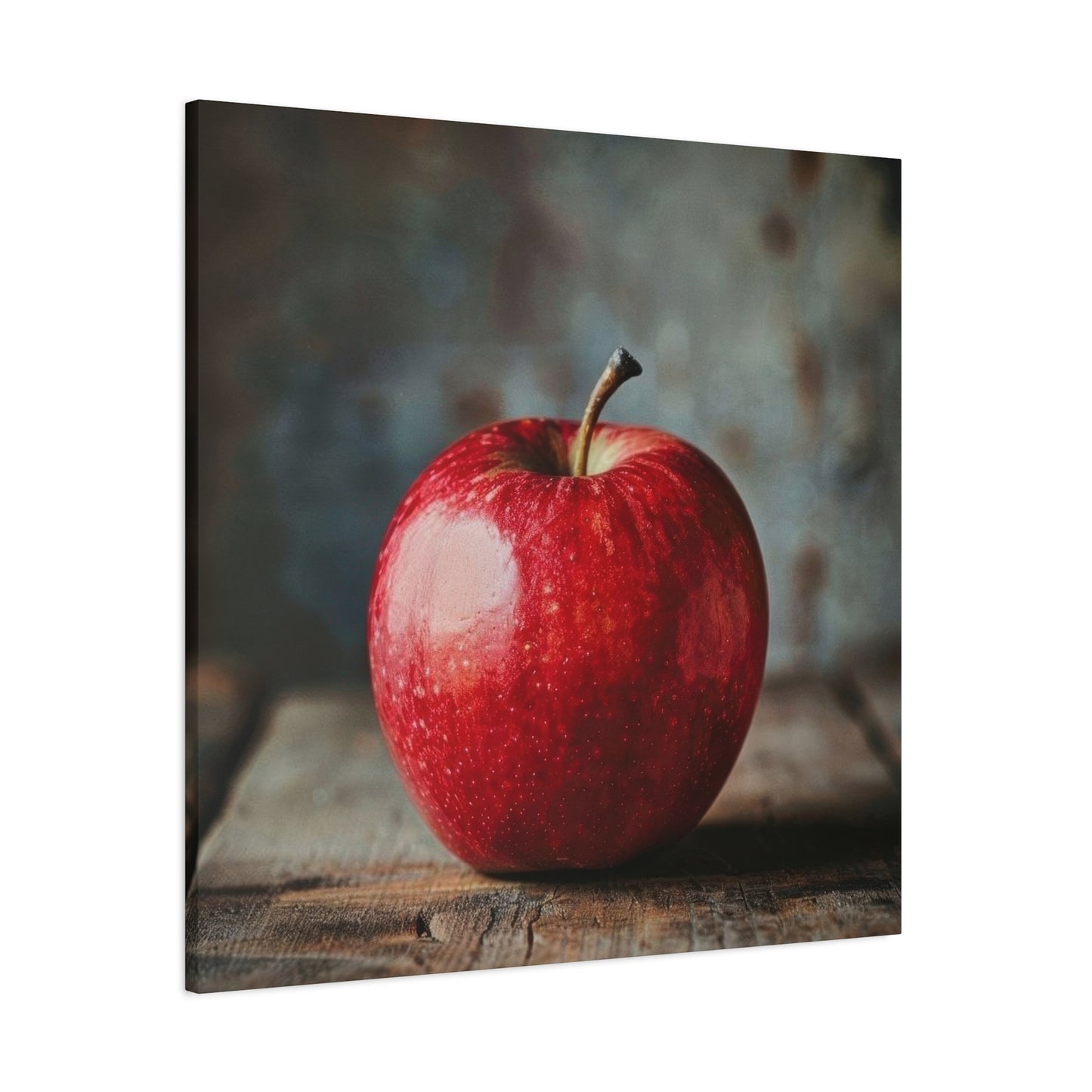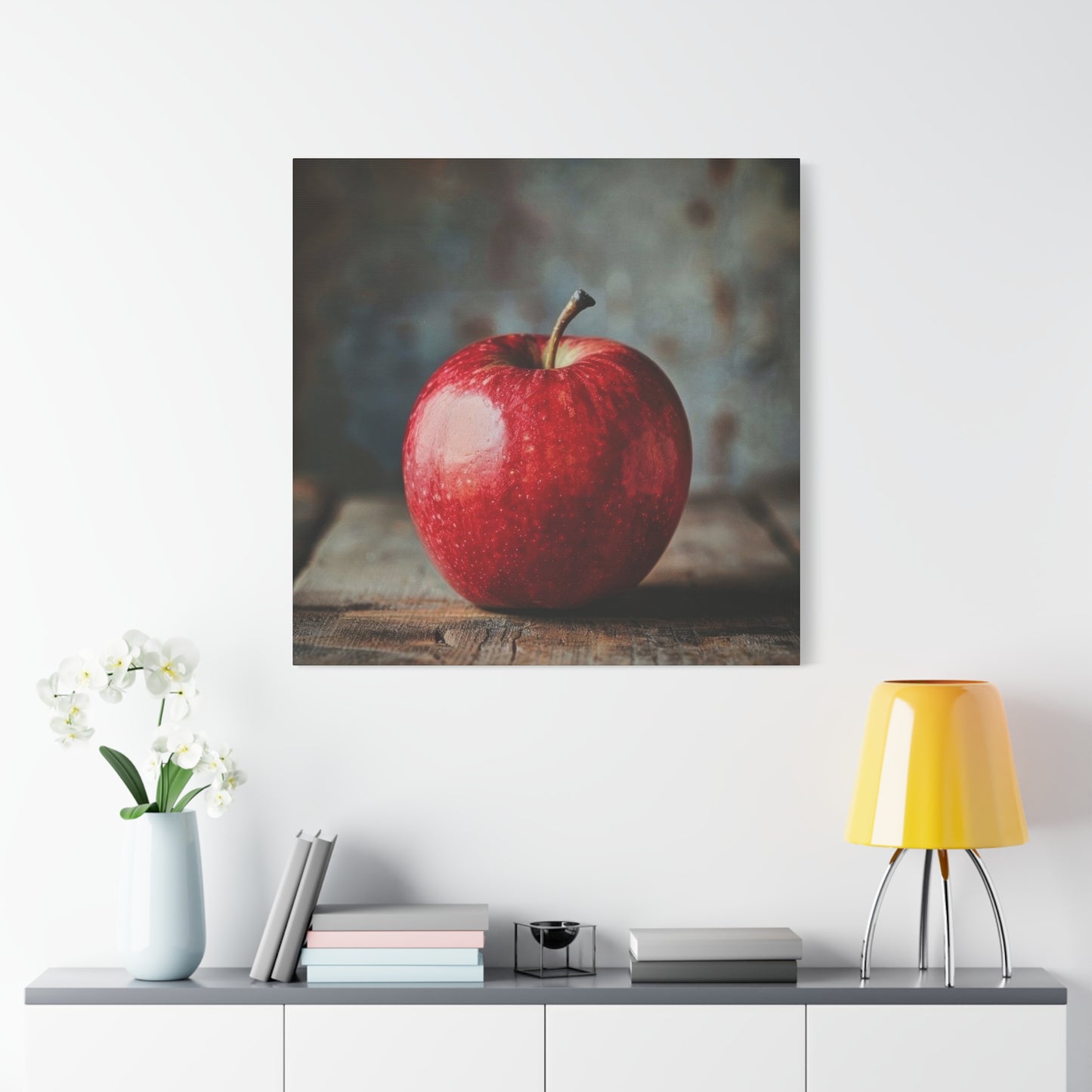The Beauty of Nature Captured: Why Apple Closeup Wall Art Works in Any Room
Nature has an unparalleled ability to inspire and soothe the human spirit. Bringing elements of the natural world into our living spaces creates an inviting atmosphere that balances modern life’s pace with calm and beauty. Among the many ways to incorporate nature into home décor, closeup wall art featuring apples offers a unique blend of freshness, symbolism, and artistic appeal that works beautifully in any room.
The apple, a humble fruit, is rich with meaning and visual interest. A closeup image of an apple—whether focusing on its vibrant skin, delicate dew drops, or intricate texture—captures the essence of life’s simplicity and abundance. This type of art highlights the often-overlooked details in nature, inviting viewers to slow down and appreciate the small wonders around them. By focusing on a single subject in intimate detail, apple closeup wall art transforms an everyday object into a stunning focal point that can elevate any space.
One of the main reasons apple closeup art fits well in diverse rooms is its versatility. The colors of apples—ranging from bright reds and sunny yellows to soft greens—bring a natural vibrancy that complements many décor styles. Whether your room features minimalist white walls, rustic wooden furniture, or bold, eclectic accents, the rich hues and organic shapes of apple closeups add warmth and freshness without overwhelming the space. This adaptability means that apple wall art can easily transition between kitchens, dining rooms, living rooms, and even bedrooms, enhancing the atmosphere with a touch of nature’s elegance.
Beyond aesthetics, apples carry deep symbolic significance that resonates in home settings. Historically, apples have represented knowledge, health, temptation, and renewal. Displaying apple art subtly invites these themes into your home, encouraging well-being and mindfulness. For example, in a kitchen or dining area, apple closeups evoke freshness and nourishment, reinforcing the importance of wholesome living. In living rooms or bedrooms, they can symbolize growth and vitality, inspiring a sense of renewal and energy. This layered symbolism adds a thoughtful dimension to the décor, making the art not just visually appealing but also meaningful.
The Energizing Effect of the Color Red
The color red has a measurable physiological effect on the human body. It can increase respiration rate, blood pressure, and energy levels. It is a color of action, passion, and vitality. Incorporating Apple Closeup wall art into a room is a way to harness this energizing effect in a controlled and aesthetically pleasing manner. In a home office or a workout room, the jolt of red can provide a welcome boost of motivation and stamina. In a living room or entryway, it can create a dynamic and vibrant first impression, making the environment feel lively and exciting. Unlike painting an entire wall red, which can be overwhelming, a piece of artwork allows you to introduce this powerful color in a focused and balanced way. The natural, organic subject matter of the apple helps to ground the energy of the color red, preventing it from feeling aggressive or jarring. It is the perfect balance of natural serenity and chromatic energy, a combination that can uplift the mood and invigorate the spirit of a room.
Connecting with Nature and Simplicity Through Apple Imagery
In our increasingly complex and digital world, there is a deep-seated human longing for a connection to nature and a simpler way of life. Artwork that features natural elements can help to satisfy this longing. A Apple Closeup wall art canvas print is a perfect example of this. It is a beautiful, uncomplicated image taken directly from the natural world. It serves as a gentle reminder of the earth, the seasons, and the simple, wholesome things that sustain us. Looking at a beautiful depiction of a perfect apple can have a calming and grounding effect. It can be a moment of visual respite from the stresses of modern life. This connection to simplicity is a powerful antidote to clutter and overstimulation. A minimalist print of a single apple, in particular, celebrates the beauty of the essential, encouraging a mindset of clarity and focus. By bringing this simple, iconic piece of nature indoors, you can create an atmosphere of tranquility, balance, and timeless, uncomplicated beauty.
Nostalgic Connections to Orchards and Autumn
For many people, the image of a Apple Closeup is inextricably linked to feelings of nostalgia, particularly for the season of autumn. It evokes memories of apple picking on a crisp fall day, the scent of cider donuts, hayrides, and the vibrant colors of changing leaves. These are often cherished memories from childhood, associated with family, fun, and the bounty of the harvest. Displaying Apple Closeup wall art can trigger these warm, nostalgic feelings, infusing a room with a sense of cozy, sentimental comfort. The artwork becomes more than just a picture of a fruit; it becomes a portal to happy memories and pleasant associations. This nostalgic connection can make a house feel more like a home, a repository of personal history and good feelings. It is a way of keeping the warmth and joy of a favorite season or a cherished memory present all year round, contributing to an atmosphere of deep-seated contentment and well-being.
Apple Closeup Art as a Tool for Mindfulness and Focus
In the practice of mindfulness, practitioners are often encouraged to focus their full attention on a single object, observing all its details without judgment. A piece of Apple Closeup wall art can serve as a wonderful visual anchor for such a practice. The simplicity of the subject allows for deep, focused contemplation. One can meditate on the smooth curve of its form, the subtle gradations of its red hue, the way the light reflects off its skin, and the texture of its stem. This act of focused looking can help to quiet the mind, reduce stress, and bring one into the present moment. Placing a simple, minimalist apple print in a quiet corner of a room, a meditation area, or a home office can create a dedicated spot for mental recalibration. The image is calming and grounding, yet the vibrant color prevents it from being boring. It is a perfect object for visual meditation, a simple tool to aid in the pursuit of clarity, focus, and inner peace.
Pairing Apple Closeup Wall Art with Other Fruit-Themed Decor
To create a cohesive and robust decorative theme, particularly in a kitchen or dining area, Apple Closeup wall art can be paired with other decor items that celebrate fruit. This doesn't mean everything has to be covered in apples. Instead, think of a broader "orchard" or "market" theme. The Apple Closeup canvas print could be the star of the show, complemented by a beautiful ceramic bowl filled with real or decorative lemons on the countertop. You could choose kitchen towels or placemats with a subtle pear or cherry pattern. A classic botanical print of a citrus tree could hang on an adjacent wall. The key is to create a curated collection rather than a chaotic jumble. The different fruits can be tied together by a consistent color palette or artistic style. This layered approach creates a rich, interesting, and thoughtfully designed environment that celebrates the beauty and bounty of nature in a stylish and sophisticated way, with the Apple Closeup artwork serving as the proud centerpiece.
Juxtaposing Apple Closeup Prints with Botanical or Floral Art
A beautiful and elegant pairing is the juxtaposition of Apple Closeup wall art with botanical or floral artwork. This combination creates a rich and layered celebration of the natural world. Imagine a gallery wall that features a central, vibrant Apple Closeup canvas print flanked by more delicate, detailed prints of white apple blossoms or green leaves. This tells a more complete story of the apple's life cycle. Alternatively, you could pair the bold, solid form of the apple with the intricate, delicate patterns of a floral print, such as a classic William Morris design or a modern, abstract floral. The contrast between the simple, powerful shape of the apple and the complex, detailed forms of the flowers creates a dynamic and visually interesting tension. This pairing works beautifully in a living room or bedroom, bringing a sophisticated, garden-inspired feel into the home. It is a way to combine different facets of nature's beauty into a single, harmonious decorative statement.
Contrasting a Modern Apple Closeup Print with Vintage Furniture
One of the hallmarks of a sophisticated and personalized decorative style is the skillful mixing of different eras and aesthetics. A fantastic way to achieve this is by creating a deliberate contrast between your art and furniture. Hanging a bold, modern, or minimalist Apple Closeup canvas print above a piece of vintage or antique furniture—such as an ornate wooden sideboard or a classic mid-century modern credenza—can create a stunning and dynamic effect. The clean lines and simple, powerful subject of the modern artwork provide a fresh and exciting counterpoint to the detailed craftsmanship and historical character of the older furniture piece. This juxtaposition highlights the best qualities of both elements. The artwork feels even more contemporary and vibrant, while the furniture's unique patina and history are thrown into sharper relief. This approach prevents a room from feeling like a sterile, one-note museum piece and instead creates an environment that feels curated, collected, and full of personality. It shows a confident design sense that is not afraid to break the rules and mix styles to create something new and beautiful.
Using Apple Closeup Art in a Monochrome Room as a Pop of Color
In a room decorated in a strictly monochrome palette—shades of black, white, and grey—a single, powerful pop of color can have an electrifying effect. A Apple Closeup wall art canvas print is the perfect candidate for this role. In an otherwise colorless environment, the vibrant red of the apple will appear incredibly saturated and intense. It becomes the undisputed focal point of the room, an injection of life and energy into a serene and controlled setting. A single, large-scale canvas is all that is needed to achieve this dramatic impact. This is a very bold and contemporary decorative strategy that showcases a love of minimalism and high-contrast design. The simplicity of the apple as a subject works perfectly here; a more complex or "busy" image might disrupt the calm of the monochrome scheme, but the clean, iconic form of the apple adds interest without adding clutter. It is a masterclass in using color sparingly but with maximum effect, transforming a simple room into a high-impact, designer-inspired environment.
Themed Decorating: Building a Room Around Your Apple Artwork
Instead of trying to find art that fits your existing decor, an alternative approach is to choose a piece of Apple Closeup wall art that you truly love and use it as the inspiration for the entire room's design. This "art-first" approach ensures that your most important decorative element is the star of the show. Let the artwork guide your choices for the color palette. You can pull the vibrant red of the apple for accent pieces like cushions, a rug, or a vase. You can use the more subtle colors from the artwork's background or shadows for the wall color or furniture. Let the style of the artwork guide the mood of the room. A rustic apple print could inspire a cozy farmhouse look with natural wood and textured fabrics. A minimalist apple print could be the starting point for a sleek, contemporary room with clean lines and uncluttered surfaces. Building a room around a central piece of art creates an incredibly cohesive, intentional, and harmonious environment where every element works together to support a single, clear artistic vision.
The Role of the Frame in Enhancing Apple Closeup Canvas Prints
While many canvas prints are displayed gallery-wrapped and unframed, adding a frame can significantly enhance the artwork and tailor it to your specific decor style. For a traditional or rustic Apple Closeup print, a warm, natural wood frame or an ornate, gold-leaf frame can add a touch of classic elegance and finish. For a modern or minimalist apple print, a simple, thin black or white "floater frame" is an excellent choice. A floater frame, which leaves a small gap between the canvas and the frame, creates a sophisticated, gallery-like presentation that makes the artwork appear to float. The frame acts as a visual boundary, separating the artwork from the wall and giving it a more polished and complete look. It can help the artwork stand out, especially if it is hanging on a wall that is a similar color to the background of the canvas. The right frame does not compete with the artwork; it complements and elevates it, turning a simple canvas print into a true centerpiece.
Customizing Your Own Apple Closeup Canvas Print from a Photo
For a truly personal and unique piece of wall art, consider creating a custom canvas print from your own photograph. If you are a keen photographer, you could stage your own still life with a beautiful Apple Closeup, experimenting with different lighting and backgrounds to create an image that is perfectly suited to your taste and your home. Perhaps you have a photo from a memorable trip to an apple orchard. Transforming that personal photograph into a large-scale canvas print turns a fleeting memory into a lasting piece of art. Many online printing services allow you to easily upload your own high-resolution image and have it printed onto a quality canvas. This allows you to control every aspect of the final product, from the exact composition and color to the size and wrap style. A custom Apple Closeup canvas print is more than just a decoration; it is a personal statement, a piece of your own story displayed proudly on your wall.
The Seasonal Appeal of Apple Artwork: Beyond Autumn
While Apple Closeups are strongly associated with autumn and the harvest season, their appeal as an art subject is truly year-round. The vibrant, life-affirming red of the apple can be a welcome sight in the middle of a grey winter, bringing a much-needed splash of color and a reminder of nature's vitality. In the spring, the image of a fresh apple can complement the season's themes of renewal and new beginnings. In the summer, a print of a crisp, dew-kissed apple can evoke a sense of coolness and refreshment. Because the apple is such a fundamental and timeless symbol of health, knowledge, and nature, it transcends seasonal boundaries. It does not feel out of place at any time of year. This versatility is one of its greatest strengths as a decorative element. A Apple Closeup wall art canvas print is a piece you can live with and enjoy throughout all the changing seasons, a constant source of beauty and positive symbolism in your home.
The Apple Closeup in Dutch Golden Age Still Life
To understand the artistic lineage of the apple, one must look to the 17th-century Dutch Golden Age, where still life painting, or stilleven, reached its zenith. In these meticulously detailed paintings, the Apple Closeup was a frequent star. Artists like Willem Claesz. Heda and Pieter Claesz were masters of capturing texture, and their renderings of the waxy sheen on an apple's skin are breathtaking. In these works, the apple was rarely just a piece of fruit. It was part of a complex symbolic arrangement, often a vanitas painting. Placed alongside a half-peeled lemon (symbolizing the deceptive allure of earthly pleasure), an overturned glass, and perhaps a skull, the perfect, ripe apple represented the fleeting nature of life and the transient beauty of the physical world. It was a moral lesson wrapped in a beautiful package. Modern Apple Closeup wall art, especially in the photorealistic style, owes a great debt to these Dutch masters and their incredible ability to elevate everyday objects into profound meditations on life and mortality.
Cézanne and the Post-Impressionist Apple
No artist is more closely associated with the apple than the Post-Impressionist master Paul Cézanne. He famously declared, "With an apple, I will astonish Paris." For Cézanne, the apple was the perfect subject for his revolutionary artistic experiments. He was not interested in creating a realistic illusion of an apple; he wanted to capture its solid, geometric essence, its "sphericity." He painted apples over and over again, using them to explore his theories about form, color, and perspective. He would build up the apple's shape with parallel, constructive brushstrokes, using subtle shifts in color to represent planes of light and shadow. His apples feel incredibly solid and monumental, as if they have the weight and permanence of mountains. Cézanne's apples are not just fruit on a table; they are profound studies in the fundamental nature of form and perception. Any modern or abstract depiction of a Apple Closeup is, in some way, in conversation with Cézanne's groundbreaking work. He forever changed the way artists saw this humble fruit.
Surrealist Interpretations from Magritte and Others
The Surrealist movement, with its fascination for the dream world and the uncanny, found a surprisingly potent symbol in the apple. The Belgian painter René Magritte used the apple in many of his most famous works, but he stripped it of its traditional meanings and imbued it with a sense of mystery and absurdity. In "The Son of Man," a green apple famously obscures the face of a bowler-hatted man, a commentary on the hidden and unknowable aspects of identity. In "The Listening Room," a gigantic apple fills an entire room, playing with our sense of scale and reality. For Magritte, the apple was a familiar object that he could place in an illogical context to jolt the viewer out of their comfortable assumptions. It becomes a visual paradox, a question rather than an answer. A Apple Closeup canvas print inspired by this surrealist tradition is a piece of art that challenges the mind, inviting us to see the world not as it is, but as it could be in a dream.
The Apple in American Folk Art Traditions
In the simpler, more direct style of American folk art, the apple often appears as a symbol of national pride, agricultural bounty, and wholesome, rustic values. Think of the legend of Johnny Appleseed, the folk hero who planted apple orchards across the American frontier. The apple, in this context, represents pioneering spirit, cultivation, and the taming of the wilderness. Folk art paintings and crafts often depict apples in a flattened, stylized manner, with bold colors and a charming lack of concern for realistic perspective. The focus is on pattern, color, and storytelling rather than illusionistic detail. A Apple Closeup wall art canvas print done in a folk art style can bring a sense of history, authenticity, and unpretentious charm to a room. It connects to a uniquely American narrative and celebrates the virtues of simplicity, hard work, and the goodness of the land.
Contemporary Hyperrealism and the Apple Closeup
Hyperrealism is a contemporary art movement that takes photorealism to an even more extreme level of detail. Artists working in this style, such as Tjalf Sparnaay, create paintings of everyday objects that are even more crisp, detailed, and saturated than a high-resolution photograph. The Apple Closeup is a perfect subject for these artists. On a massive canvas, they will render every single pore, every subtle blemish, and every microscopic reflection on the apple's skin with almost unbelievable precision. The result is an image that is both real and surreal. It is a "hyper" version of reality that forces us to look at a common object with fresh eyes and a sense of wonder. A hyperrealistic Apple Closeup canvas print is a stunning technical achievement. It celebrates the incredible beauty that can be found in the most ordinary of objects when they are observed with intense, unwavering focus. It is a modern testament to the enduring power of skill, patience, and a deep appreciation for the details of the world around us.
Apples on a Branch: Connecting to Nature
Depicting the Apple Closeup still attached to a branch, perhaps with a few green leaves, places the fruit back into its natural context and creates a different set of associations. This composition connects the apple directly to the tree it grew on and to the broader world of nature and the changing seasons. It evokes the feeling of an orchard, of late summer or early autumn, and the satisfaction of a successful harvest. The woody texture of the branch and the delicate veins of the leaves provide a beautiful visual contrast to the smooth, uniform skin of the apple. This type of artwork often feels more organic, rustic, and alive than a studio still life. It is a celebration of the entire life cycle of the fruit, not just the final product. A Apple Closeup wall art canvas print showing the apple on a branch can bring a sense of the outdoors into the home. It is a perfect choice for a rustic, farmhouse, or country-style decor, as it reinforces themes of natural living and a connection to the land. It is a gentle reminder of where our food comes from and the simple, cyclical beauty of the natural world.
Selecting the Right Size of Canvas for Your Wall
Choosing the correct size for your Apple Closeup wall art canvas print is crucial for its overall impact. A common mistake is to choose art that is too small for the wall, which can look lost and insignificant. A good rule of thumb for hanging art above a piece of furniture like a sofa or a sideboard is that the canvas should be at least two-thirds the width of the furniture. For example, above a 90-inch sofa, you should look for a piece of art that is at least 60 inches wide. For a large, empty wall, don't be afraid to go big. A single, oversized canvas can have a much more dramatic and sophisticated impact than a collection of smaller, scattered pieces. Before buying, it can be helpful to map out the size on the wall using painter's tape or by cutting out a piece of paper to the potential artwork's dimensions. This allows you to visualize the scale and ensure it feels balanced within the room. Conversely, for a small nook or a narrow wall, a smaller, more intimately scaled piece or a vertical composition would be more appropriate. Proper scaling ensures your artwork complements the room rather than competing with or getting lost in it.
Considering the Orientation: Horizontal, Vertical, or Square
The orientation of the canvas—whether it is a horizontal landscape, a vertical portrait, or a square—should be chosen based on the shape of the wall where it will hang. A long, horizontal wall, such as the wall behind a sofa or in a hallway, is the perfect place for a wide, landscape-oriented canvas print. This will complement the shape of the wall and create a sense of expansive flow. For a narrow wall, such as the space between two windows or doors, a vertical, portrait-oriented canvas is the ideal choice. It will draw the eye upward and make the ceiling feel higher, accentuating the height of the room. A square canvas is a versatile and modern option. A single, large square can create a powerful, focused statement. A grid of four or nine smaller square canvases can also create a very stylish and contemporary gallery wall. The orientation of the canvas should work in harmony with the architecture of the room. By matching the shape of the art to the shape of the wall, you create a sense of intentionality and visual harmony that is pleasing to the eye.
How to Properly Measure Your Wall for Artwork
To ensure you choose the perfectly sized piece of Apple Closeup wall art, taking accurate measurements is a vital first step. Start by measuring the full width and height of the wall you intend to decorate. If you plan to hang the artwork above a piece of furniture like a console table or a bed, measure the width of that furniture. As a general guideline, the artwork or art grouping should be between 50% and 75% of the width of the furniture it hangs above. This creates a balanced and anchored look. Next, consider the vertical placement. The center of the artwork should ideally be at eye level, which is typically considered to be between 57 and 60 inches from the floor. When hanging art above furniture, leave a gap of about 6 to 12 inches between the bottom of the canvas and the top of the furniture. Marking these measurements on the wall with light pencil marks or painter's tape can provide a clear visual guide, helping you to confidently select a canvas print that will fit the area perfectly and create a professional, well-composed display.
Lighting Your Apple Closeup Wall Art for Maximum Impact
Proper lighting can dramatically enhance the appearance of your Apple Closeup canvas print, making the colors more vibrant and the details more apparent. While natural light is beautiful, direct sunlight should be avoided as its UV rays can cause fading over time, even with archival inks and protective coatings. For artificial lighting, there are several excellent options. A ceiling-mounted accent light, such as a track light or a spotlight, is a popular choice. It should be aimed at the center of the canvas at a 30-degree angle. This angle is ideal because it illuminates the piece effectively while minimizing glare and casting distracting shadows. Another elegant solution is a picture light, which is a fixture that mounts directly to the wall above the artwork or to the frame itself. These provide focused, dedicated illumination. When choosing bulbs, look for those with a high Color Rendering Index (CRI) of 90 or above. A high CRI ensures that colors are rendered accurately, so the brilliant red of the apple will look true and rich. The right lighting can transform a beautiful piece of art into a breathtaking centerpiece.
Hanging Your Canvas Print: Tools and Techniques
Hanging your Apple Closeup canvas print correctly will ensure it is secure and looks professional. For most small to medium-sized canvases, a simple sawtooth hanger attached to the top center of the wooden frame is sufficient. You will only need a hammer, a nail or picture hook, a tape measure, and a level. For larger, heavier canvases, it is much more secure to use D-rings and picture wire. Attach two D-rings to the back of the frame, about one-third of the way down from the top on each side. Then, string a piece of sturdy picture wire between the two rings, leaving a little slack in the wire. This setup should be hung on two picture hooks on the wall, spaced apart for stability. This two-hook method prevents the canvas from tilting or shifting over time. Always use a level to ensure your artwork is perfectly straight. A bubble level or a laser level is invaluable for this task. Taking a few extra minutes to hang your canvas properly will make a significant difference in the finished look of your display.
Leveling and Centering Your Artwork for a Professional Look
Achieving a perfectly level and centered placement is the final touch that gives your art installation a professional quality. After measuring and marking the spot where your nail or hooks will go, use a level to confirm your marks are straight before hammering. Once the canvas is on the wall, place the level on top of the frame to check if it is straight. Adjust it gently until the bubble is perfectly centered. If you are centering the artwork on a wall, measure the total width of the wall and divide by two to find the center point. This point should align with the center of your canvas. If you are centering it over a piece of furniture, find the center of the furniture and align the center of the canvas with that point. For gallery walls, meticulous planning is key. Lay the canvases out on the floor first to finalize the arrangement and spacing before putting any holes in the wall. This attention to detail in placement ensures that your Apple Closeup wall art looks deliberate, balanced, and seamlessly integrated into its environment.
Cleaning and Caring for Your Apple Closeup Canvas Print
Proper care will keep your Apple Closeup wall art looking vibrant for many years. The most important regular maintenance is dusting. Use a soft, dry, lint-free cloth or a feather duster to gently wipe the surface of the canvas. Avoid using any chemical cleaning sprays or water, as these can damage the ink and the protective varnish. For a more stubborn spot of dust or a small mark, you can very lightly dampen a soft cloth with water, but test it on a small, inconspicuous corner first. Never scrub the canvas, as this can remove the ink. For canvases hung in a kitchen, a protective varnish is especially important to repel moisture and grease. Keep the artwork out of direct sunlight to prevent long-term fading and avoid hanging it in areas of extreme humidity or temperature fluctuations, such as directly above a stove or in a bathroom without proper ventilation. With these simple care instructions, your canvas print will remain a beautiful and cherished part of your home's decor.
Protecting Your Artwork from Sunlight and UV Damage
Ultraviolet (UV) radiation from sunlight is the single biggest threat to the longevity of any artwork. While Apple Closeup wall art canvas prints made with archival, pigment-based inks and a UV-protective varnish are highly resistant to fading, prolonged exposure to direct sunlight will eventually take its toll. The best line of defense is careful placement. Choose a wall that does not receive direct, intense sunlight throughout the day. If you wish to hang the art in a sunny room, consider using UV-filtering window films or blinds that can be closed during the sunniest parts of the day. For extremely valuable or cherished pieces, you can have the canvas framed behind UV-protective glass or acrylic, although this will alter the traditional appearance of a gallery-wrapped canvas. By being mindful of the sun's impact and taking preventative measures, you can ensure that the rich, saturated red of your apple artwork stays as brilliant as the day it was printed for generations to come.
Unexpected Placements: Apple Closeup Art in Home Offices
The home office is a setting that needs to balance professionalism and focus with comfort and inspiration, and the right artwork can help achieve this balance. Placing a Apple Closeup wall art canvas print in a home office is an unexpected choice that can be remarkably effective. The apple has long been a symbol of knowledge and learning, dating back to the story of the Tree of Knowledge and even Isaac Newton's apocryphal discovery of gravity. In this context, the apple artwork can serve as a subtle nod to intellectual pursuits, creativity, and "aha" moments of inspiration. It is a far more interesting and symbolic choice than a generic landscape or a motivational poster. The vibrant red color can also provide a burst of energy, helping to combat the mental fatigue that can set in during a long workday. A minimalist print of a single Apple Closeup against a white background can provide a clean, uncluttered point of focus that aids concentration without being distracting. It is a sophisticated way to personalize a workspace, infusing it with color, symbolism, and a touch of natural beauty that can make the environment more pleasant and conducive to productive work.
Complementing a Breakfast Nook with Cheerful Apple Prints
A breakfast nook is a small, intimate area designed for casual meals, morning coffee, and starting the day on a positive note. The decor in this area should be cheerful, bright, and uplifting. Apple Closeup wall art is a perfect complement to such a setting. The image of a crisp, fresh apple is intrinsically linked to mornings and healthy beginnings. It is a vibrant and optimistic image that can help set a positive tone for the day ahead. A smaller canvas print or a series of two or three smaller prints can fit perfectly within the cozy confines of a nook without overwhelming it. A painterly, impressionistic, or watercolor-style apple print can add a soft, artistic touch, while a bright, graphic print can inject a dose of playful energy. The artwork can be used to tie together other decorative elements, such as red seat cushions, a red kettle, or a vase of flowers. It helps to create a cohesive and intentionally designed little corner of the home that feels special and inviting. It is a simple addition that can transform a functional eating area into a charming and delightful part of the daily routine.
Using Apple Closeup Art to Enhance a Pantry or Larder
The pantry or larder, once a purely utilitarian storage area, is increasingly being seen as an extension of the kitchen that can be enhanced with decorative touches. Adding a piece of Apple Closeup wall art to a pantry is a clever and thematic way to elevate this functional part of the home. It reinforces the room's purpose—the storage of food and provisions—in a beautiful and artistic way. Hanging a rustic or vintage-style Apple Closeup canvas print can lend a charming, old-world feel to the pantry, evoking the image of a traditional root cellar filled with the autumn harvest. It can make the simple act of retrieving ingredients feel a little more special. Because a pantry is often a smaller, enclosed area, even a moderately sized canvas can have a big impact. It adds a surprising pop of color and visual interest to a place that is often overlooked in terms of decoration. It is a thoughtful detail that shows a commitment to creating a beautiful and cohesive home environment, right down to the storage areas. It is a small touch that can bring a smile every time you open the pantry door.
Creating a Thematic Gallery Wall with Fruit Canvases
A gallery wall, which is a collection of multiple artworks grouped together, is a popular way to display art and personalize a home. Instead of a random assortment of images, creating a thematic gallery wall can result in a particularly cohesive and impactful display. Using fruit as a theme, with Apple Closeup wall art canvas prints as the anchor, is a fantastic option, especially for a kitchen or dining room. You could build a collection around a central, large Apple Closeup print. This could be surrounded by smaller canvases depicting other fruits that complement it in color and form, such as green pears, deep purple plums, or bright yellow lemons. You could also vary the artistic style within the theme, pairing a photorealistic apple with an impressionistic pear and an abstract lemon. This creates a display that is unified by subject matter but varied and interesting in its execution. Alternatively, the gallery could explore the apple itself in different ways: one canvas showing a whole apple, another a sliced apple, a third showing an apple on a branch, and a fourth in a more abstract style. This approach creates a rich visual narrative around a single, beloved subject.
Conclusion:
Apple closeup wall art offers a unique and refreshing way to bring natural beauty and vivid detail into your home décor. By focusing on the intricate textures, colors, and shapes of apples, this style of art celebrates simplicity and the elegance found in everyday nature. Whether rendered in hyper-realistic photography, vibrant paintings, or minimalist illustrations, apple closeup art injects a fresh, wholesome vibe into any living space.
The appeal of apple closeup wall art lies in its ability to highlight the familiar in a new light. The bright reds, greens, and yellows of apples add lively pops of color, while the detailed portrayal of the fruit’s skin, droplets of water, and subtle imperfections create a tactile, almost sensory experience. These artworks invite viewers to slow down and appreciate nature’s artistry—turning a simple fruit into a captivating centerpiece.
Incorporating apple closeup art into your home can brighten kitchens, dining rooms, or breakfast nooks, reinforcing themes of health, vitality, and nourishment. The imagery complements a range of interior styles, from rustic farmhouse kitchens with wooden accents to sleek, modern spaces that benefit from a touch of organic warmth. Apple art also pairs beautifully with other botanical prints or natural textures, helping to cultivate a cohesive, nature-inspired environment.
Moreover, apple closeup wall art carries symbolic meanings that enhance its decorative role. Apples are often associated with knowledge, temptation, and renewal, adding layers of depth to your décor. Whether you’re inspired by the apple’s connection to wellness or its cultural significance, displaying such art offers a subtle yet powerful narrative.
Another advantage is the versatility of this art form. You can choose a single large-scale print to act as a striking focal point or create a gallery wall with a series of apple closeups showcasing different varieties and perspectives. This flexibility allows you to tailor the artwork to your available space and personal style.
In conclusion, apple closeup wall art is an excellent choice for anyone looking to infuse their home with natural beauty, vibrant color, and meaningful symbolism. It transforms a simple subject into a sophisticated visual statement that refreshes your environment and celebrates the elegance of nature’s everyday wonders.

















